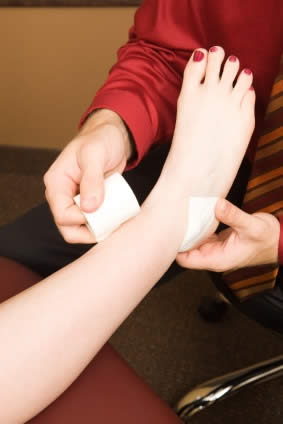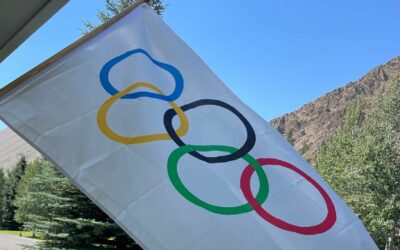“An ounce of prevention is worth a pound of cure.”
Ben Franklin said these famous words in 1736 in reference to fire prevention. You can apply the same philosophy, however, to sports injuries. For several reasons–beyond the obvious–we want to avoid any initial injuries that can lead to further pain and musculoskeletal issues.
Reason One: Injury and surgery can cause recurring problems.
My husband, Ken, is living proof of this statement. To illustrate, he has had two ACL surgeries and two cartilage repairs for a total of four surgeries on the same knee. Actually, I, too, have had three knee surgeries on the same knee. Thus, knee surgeries became so frequent in our household that Ken and I joked about it, wondering who would go under the knife each year.
The truth is that surgery alters the natural state of the body. Obviously, surgeons do many invasive things. For example, they reconstruct ligaments, remove cartilage, insert metal plates, pins and rods, replace joints, or perform other invasive procedures. All of these limit hope for a full recovery. As a posture alignment therapist, I have worked with many clients who still have pain or limitation from a previous operation. In other words, surgery doesn’t just “fix” the problem.
Reason Two: Osteoarthritis (OA) develops after injury, surgery and overuse.
Let me explain. OA is breakdown of the cartilage within joints. Cartilage, found on the ends of bones, is a protective tissue that absorbs shock and facilitates smooth joint motions. According to the Arthritis Foundation, athletes might have more cartilage issues: “Athletes . . . have a higher risk of developing osteoarthritis due to injury and increased stress on certain joints. Soft tissue injuries, such as ACL tears, can lead to OA; it can also appear in joints affected by previous bone fractures and surgeries.” The Arthritis Foundation goes on to state, “Osteoarthritis can also damage ligaments, menisci and muscles” (2011 Arthritis Foundation).
Injury can cause OA. And, more importantly, OA itself can cause more injury. This condition can be very painful and incapacitating because it causes stiffness, swelling and movement restrictions. While the cartilage is worn down, it starts to expose the bone. Consequently, OA is a leading cause of joint replacements. Actually, in 2009, the American Academy of Orthopaedic Surgeons (AAOS) reported that 700,000 primary total hip and knee replacements are performed annually. This figure is expected to double over the next 10 years.
Since cartilage is very slow to heal, it would obviously be better to prevent OA and protect the cartilage than it would be to try to manage the disease. I was diagnosed with bone-on-bone OA in my left hip after my arthroscopic surgery. When my doctor and I parted, his last words were, “I’ll see you in 15 years for your hip replacement.” I don’t think so!
Reason Three: Asymmetrical movements become ingrained and are perpetuated by our bodies.
When we are hurt, our movements compensate, and we favor the affected side. For example, if the joint or muscles cannot move or bear weight the way that nature intended, the unaffected joints and muscles step up to take on more of the load. If you have ever hurt your ankle, you know that it does not take long for the unaffected ankle to become painful because of the extra weight the joint is bearing. Just limp around for a while, and you will get the idea.
My dad experienced this issue. Before his knee replacement, he couldn’t bear his full weight on his affected knee without pain. Therefore, he altered his walking pattern so that the opposite side of his body had to assume more physical work. Consequently, his other knee began to hurt. Then, he also developed pain in his hips and lower back. Why? Because these joints had to exert more effort to alleviate the strain on his knee. So, they became painful from the additional stress.
When we alter our movement patterns, they become ingrained at an unconscious level. In other words, they still occurring even after the pain has subsided. In turn, this can lead to muscle imbalances between the right and left sides of the body. Simultaneously or alternatively, the muscles on either side of the joint lose symmetry. For example, the hamstrings and quadriceps muscles become out of balance in strength or function.
When we are out of balance and compensating in our movements, the body lets us know. Learn the signs to look for in my blog: Are you moving in balance? Three ways to tell.
Reason Four: We ignore the underlying cause of the injury.
Why did your injury occur? Often we are so concerned with getting back to our sport that we do not take time to evaluate why the injury happened in the first place. This sets us up for repeating the mistake. This situation often causes slowly-developing, chronic injuries. For instance, it was not until after my hip surgery, eight years following my first knee surgery, that I realized my preceding knee injuries were because of two factors. One was poor postural position. The other was a lack of muscle function. In other words, I failed to recognize and correct the underlying causes of my injuries. As a result, the issues continued. This resulted in recurrent joint deterioration and numerous surgeries.
The Good News!
Yes, injuries happen. And of course, sometimes you need to have surgery. If, however, you address the reasons that are within your control, you can reduce your chances for further problems. It has been nearly a decade since my last surgery. Despite being diagnosed with severe OA in my hip, I have no pain in the joint. The posture therapy I have done has reduced the strain on my cartilage. This has given it the opportunity to regenerate. I feel stronger and more at ease in my body as a result of correcting my compensated movement patterns. When I addressed the underlying cause of my injures, when I combined improved joint position and proper muscle mechanics, I changed. I improved my athletic performance. And, I gained the confidence I need for long-term, pain free activity.
Heed our experiences, and listen to Ben Franklin: Avoid injury in the first place, and you will be a life-long athlete!



